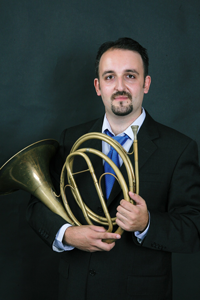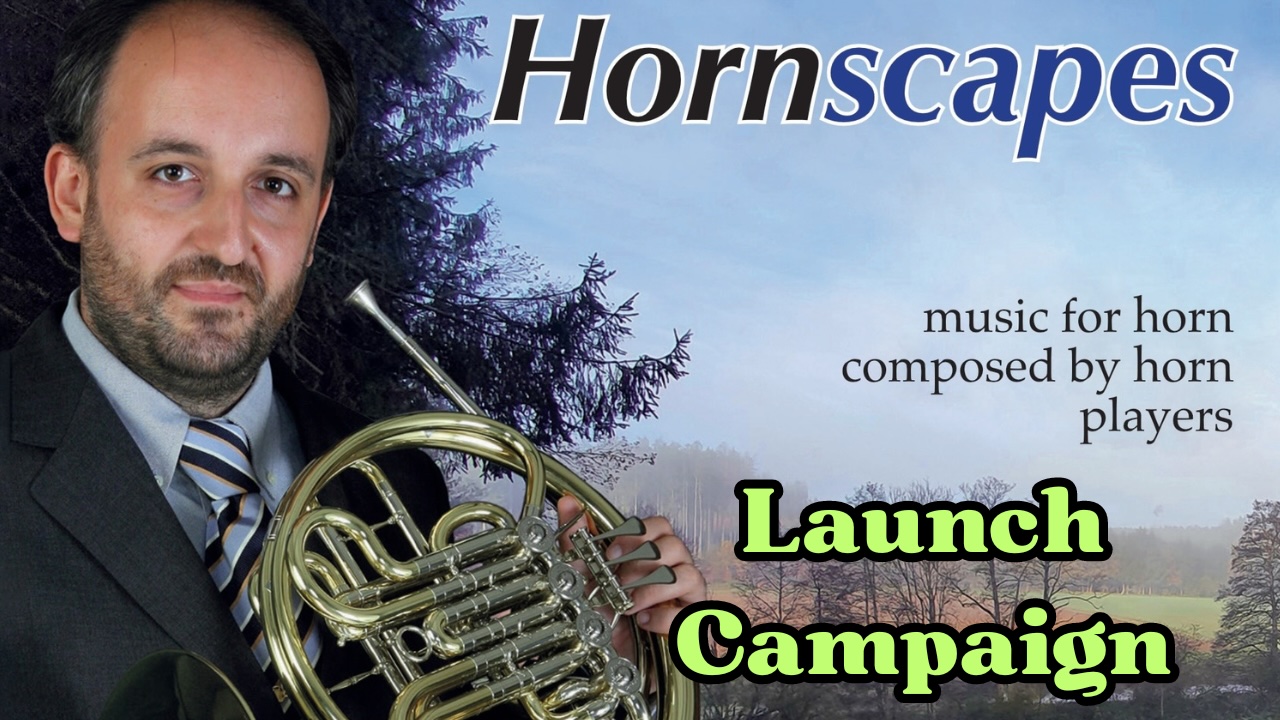Published in November 2018 at AvA Musical Editions
Featured Division winner in the 2018 International Horn Society Composition Contest.


ca. 11' 40''
[Also available in an orchestral version]
This program piece is inspired in all those that started as horn players early in their lives, but ended up following other music related areas such as composition or even other areas that have nothing to do with music.
Somehow the horn will call them again later in their lives and many of them will end up answering to that call. This answer to an echo from the past can somehow be transversal to other areas of knowledge. From the musical point of view, this echo from the past is represented in this piece by spatial effects such as listening the horn from different distances and the mysterious resonances inside the piano. This piece is divided into four continuum sections and after the second, one of the players walks away from the stage. In the third section the horn player that remains on stage changes his instrument to a natural horn, using only the notes available within a single harmonic series, including the 7th and 11th overtones usually avoided due to their intonation and this way a connection to the primitive horn is established. The piano is used in this section just as a resonance and this sound helps to recall the historic relation of the horn to the nature. In the last section, the horn player on stage plays a horn call that is answered by the off stage one, that gradually returns to the stage, which represents this way the acceptation of the call from the past.
Most of the pieces for two horns tend to be too demanding, including an extended range or a multiplicity of extended techniques, that make them difficult or even impossible for students to play. This piece was composed having in mind a broad spectrum of performers and thought to be played by students and amateurs. It also includes musical content and integrity to honor the professional hornists. This is truly a compositional challenge. Being a horn player myself, I thought about the horn and about all its wonderful possibilities in order to make a great sound with the least effort possible. To do so I focused on its most characteristic range, using special effects built on tradition but without requiring any extended technique. On the 1st horn part there are passages that include multiphonics, but ossias are available allowing this piece to be played by those, that don’t feel comfortable with this technique. As for the high pitched voices, these passages can be played and sang one octave higher.
Despite this piece being possible to play entirely on a F horn, most of the faster passages were thought having in mind the Bb horn fingerings. The third section is written for a natural horn in E flat. For those who don’t own a natural horn, it can be played using a modern one, just by pressing the first key on the F side of the horn. In this piece you can find the heroic spirit and the lyrical sweetness characteristic of this instrument. All these allied with the calls and responses in pairs and the bound with nature given by the echos and reflections make this piece the perfect complement to a recital with two horn players.



